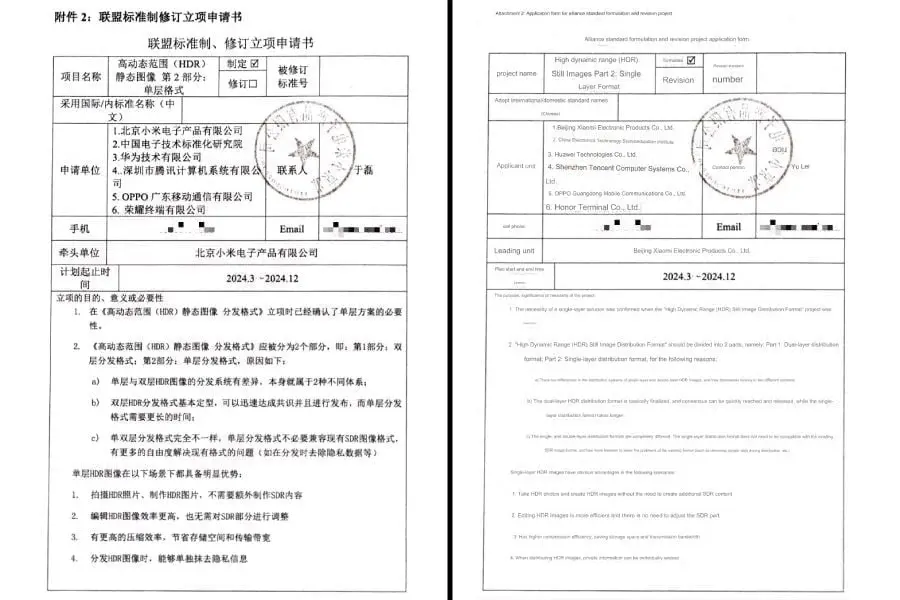Xiaomi is known for its top-notch smartphone camera technology, but the company is now expanding its influence in the imaging industry by leading the development of a new HDR image standard. This initiative is part of a project approved by the World Ultra-HD Video Industry Alliance (UWA Alliance) focusing on creating a single-layer format for High Dynamic Range (HDR) still images.
Collaborative Efforts for Innovation
Xiaomi is spearheading this project in partnership with the China Electronics Technology Standardization Institute, Huawei, Tencent, OPPO, and Honor. Together, they aim to establish a standardized framework for HDR image processing by late 2024.
Advancements in HDR Technology
The project sets standards for two types of HDR still image formats – single-layer and double-layer. The double-layer format combines HDR with Standard Dynamic Range (SDR), while the single-layer format exclusively features HDR. Xiaomi is particularly focusing its efforts on the development of the single-layer distribution format.
Benefits of Single-Layer HDR Images
The UWA Alliance highlights several advantages of single-layer HDR images, such as the ability to capture HDR photos and create HDR images without the need for additional SDR content. Editing HDR images becomes more efficient, with higher compression efficiency leading to savings in storage space and transmission bandwidth. Moreover, private information can be selectively erased when distributing HDR images.
Upon completion, this new standard will define the distribution format of single-layer HDR images, covering aspects like image formatting, metadata, HDR to SDR conversion, as well as guidelines for producing, editing, transmitting, and viewing single-layer HDR images.



Leave a Reply